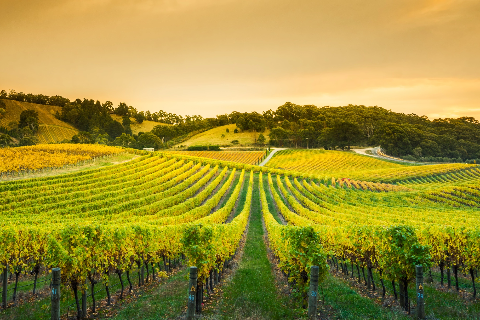
Château Coussin Famille Sumeire
The Sumeire family, owners of the château, have deep roots in Trets, with traces of their presence among the village's notables dating back to 1238. Acquired through marriage in the early 20th century, the 150-hectare estate is HVE3 certified. The vines, at slightly higher altitudes, are cultivated without the use of weedkillers to respect the environment.

Château Crabitey
In 1872, Franciscan nuns set up an orphanage, with vine-growing as one of its main resources. Thanks to their investment, Château Crabitey, located in the heart of the Graves PDO in Portets, already enjoyed a fine reputation. To further develop the quality of the estate, Jean-Ralph de Butler joined in 1985 as an agricultural engineer. His son, Arnaud, succeeded him in 1999, and finally became owner of the Château in 2008 with his wife.

Château Ferry Lacombe
The 130-hectare vineyard and forest estate is located on one of the finest terroirs in the Arc Valley, between Sainte-Victoire and Mont Aurélien. Although the Ferry family settled here in 1442 and continued until 1820, it is now the Pinot family that produces Côtes-de-Provence, and above all Sainte-Victoire appellation wines.

Château Fontvert
Château Fonvert lies in the foothills of the Luberon massif, near Lourmarin. It's a 22-hectare estate of vines planted on light-colored, stony molasse soils, benefiting from a Mediterranean climate regulated by the massif, which keeps the vines relatively cool. The vineyard is certified DEMETER (biodynamic agriculture), and an underground cellar maintains a constant temperature and hygrometry all year round to ensure the best possible aging of the wines.

Château Gassier
It's impossible to miss the Sainte-Victoire that dominates the estate. Still owned by the Gassier family, the château converted to organic viticulture in 2016 to preserve its exceptional environment and biodiversity. To enjoy the magic of the place, open-air cinema, concerts and plays are regularly organized.

Château Grand Boise
Since its creation in 1610, Grand Boise has changed ownership only three times. Today, the estate's 77 parcels, covering 45 hectares, are the highest in the Sainte-Victoire appellation, situated between 300 and 640 m altitude. Thanks to plenty of sunshine, the château's wines are fresh and well-balanced.


Château Henri Bonnaud
Passionate and self-taught, Stéphane Spitzglous, representing the family's third generation of winemakers, chose to name the estate after his grandfather. At the head of the estate since 2004, he converted the 30 hectares of vines to organic production in 2010. The following year, he laid the foundation stone for what is now "Le Château", thus fulfilling his dream.

Château La Rose Sarron
The winegrowing history of this estate, founded in the 19th century, began in earnest twenty-five years ago. Located in Saint-Pierre-de-Mons in the Graves PDO, the estate was acquired in 1985 by Vignobles Roland Belloc. Its diversified terroir, comprising gravel with large pebbles and clayey or silty soils on one side, and siliceous gravel on the other, enables the production of an excellent quality red wine and an elegant white wine. For twenty years, Roland Belloc, then Philippe Rochet, worked to develop Château La Rose Sarron. In 2016, Damien, the eldest son, joined the family estate after eight years as an engineer.

Château La Sable
Virginie and Jean-Marc Mercier took over this historic Luberon estate in 2017. By 2022, it will be certified organic. The estate covers 14 hectares, 10 of which are vineyards. The rest is made up of olive trees and century-old trees. The vineyard produces just over 20,000 bottles in three colors.
Food products, kitchen equipment, tableware, service solutions...
See the full list of partners who place their trust in Gault&Millau
All our partners





















































